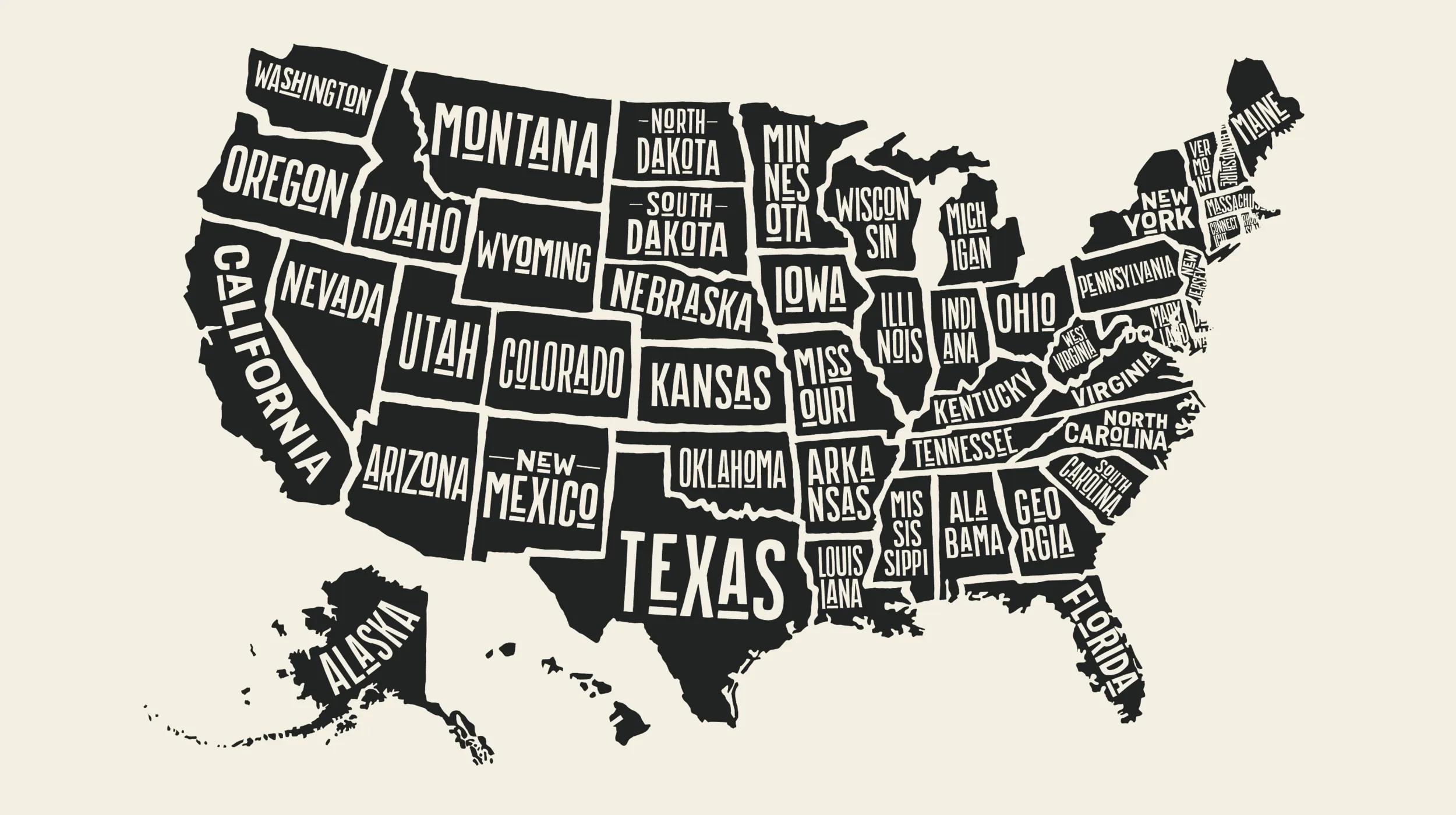Loss can take many forms: missing inventory, theft, damage, or simple accounting errors. Without a strategy to prevent it, those small issues can add up fast. That’s why loss prevention is so important; it can help you take proactive steps to protect your products, profits, and peace of mind. In this guide, we’ll break down the loss prevention definition, explore why it matters, and share practical tips to help you protect your business from preventable shrinkage.
What is loss prevention?
Loss prevention is a business strategy focused on reducing avoidable losses, such as theft, fraud, or inventory shrinkage. It’s a proactive approach that helps businesses protect their assets from internal and external threats.
Loss control and risk management are not the same as loss prevention. The first two strategies work to minimize the impact of potential issues, while loss prevention aims to stop those issues before they happen. This usually includes situations like:
- Shoplifting and employee theft
- Fraudulent returns or transactions
- Inventory miscounts and record errors
- Vendor fraud or delivery issues
- Damaged or expired goods
Key causes of inventory loss
Understanding why losses happen is the first step to preventing them. Most inventory shrinkage is a result of one or more of the following:
- External theft: Shoplifting and break-ins can lead to serious inventory losses. For example, high-traffic retail stores often deal with stolen merchandise during busy hours.
- Internal theft: Employee theft may be harder to detect, but can be just as damaging. Missing cash, discounts given without approval, or products taken from stockrooms are common signs.
- Fraud: This can include fake returns, refund scams, or vendor billing schemes. Fraud costs money and damages trust in your processes.
- Operational errors: Mistakes in counting, tracking, or shipping inventory can lead to misreporting. A simple typo in your stock records can result in over-ordering or missing items.
- Waste: Perishable goods, damaged items, or expired products often get written off. This type of loss adds up quickly in industries like food, health, or beauty.
- Cyber threats: Digital theft and hacking can compromise inventory systems. A cyberattack might target your POS software or backend databases, leading to missing data or stolen customer information.
The customer experience
Outside of its impact on inventory, retail loss prevention also affects how customers interact with your business. Security measures like cameras or bag checks can create a sense of safety, but if overdone, they might feel intrusive or unfriendly. The key is finding a balance between protecting your products and maintaining a positive shopping environment.
- Train staff on soft skills: A warm greeting and positive attitude go a long way, even when following security protocols.
- Use signage strategically: Clear signs about surveillance or return policies can deter theft without making honest customers feel uncomfortable.
- Streamline checkout: Efficient point-of-sale systems and clear receipts build trust. Learn more about writing a receipt that’s professional and easy to understand.
- Design with flow in mind: Store layouts that are open and well-lit help reduce theft while still feeling welcoming.
Essential loss prevention strategies and tips
From inventory errors to outright theft, loss can creep in from many angles. These practical strategies can help you stay ahead of it without turning your shop into a fortress.
1. Train your team to spot issues early
Your employees are your eyes and ears on the floor. When they know what to look for—like suspicious behavior, checkout tricks, or common inventory slip-ups—they can stop problems before they start. Make loss prevention training part of your onboarding process and revisit it regularly.
2. Create clear, consistent store policies
A strong return or refund policy helps protect your business from fraud while setting the right expectations with customers. Post policies near the register, on receipts, and online so everyone’s on the same page. Consistency is key: it shows you mean business and reduces confusion for staff and shoppers alike.
3. Use security technology
Loss prevention security technology, like cameras, alarms, and EAS (electronic article surveillance) tags, can help catch and prevent theft. Position cameras in key areas like entryways, cash registers, and stockrooms. EAS tags are great for retail shelves, and alarms on exits can stop grab-and-go losses. Make sure you choose tools that match your setup and budget.
4. Hire with trust in mind
Unfortunately, internal theft is a big source of shrinkage. Screening applicants with background checks, references, and even short trial shifts can help you build a reliable team from the start. Look for people who show accountability and take pride in doing things the right way.
5. Stay on top of inventory
Inventory management is the heart of any good loss prevention strategy. Regular inventory checks help catch issues early and prevent costly mistakes. Digital tools, barcodes, and cycle counting make the process easier to manage, especially for growing businesses.
6. Invest in a good POS system
A modern POS (point-of-sale) system helps you track inventory, manage returns, and set employee permissions. They include tools like role-based access and automatic reports that make it easier to spot red flags and prevent loss before it snowballs.
7. Watch for signs of fraud
Fraud shows up in a lot of small ways: returns that don’t match receipts, discounts applied too often, suspicious gift cards, and more. The faster you catch it, the better. Encourage your team to flag anything that feels off, and keep a system in place to review patterns regularly.
8. Don’t forget digital security
Your physical space isn’t the only place at risk. POS systems, customer data, and online checkout tools are all vulnerable to cyber threats. Use secure payment methods, strong passwords, and software with automatic updates. It’s one of the easiest ways to stop loss before it even gets through the door.
Common mistakes to avoid in loss prevention
Even with the best intentions, it’s easy to overlook key aspects of a loss prevention plan. Below are a few common mistakes and their solutions.
| Mistakes | Solutions |
|---|---|
| Skipping employee training | Make loss prevention training part of onboardingRevisit it regularly to keep the information freshTeach them how to recognize and report suspicious activity |
| Relying too much on technology | Combine security technology with daily inventory habitsDon’t overlook the value of employee awarenessUse technology as a supplement, not a substitute |
| Not getting team buy-in | Explain how loss impacts the entire businessInvolve staff in prevention planning |
| Ignoring small losses | Track all losses consistently Connect loss data to your profit marginReview trends against your break-even point |
| Skipping regular audits | Set a recurring audit scheduleSpot-check fast-moving or high-risk itemsUse audit results to adjust policies or processes |
Measuring success: key metrics and KPIs
Tracking your results is just as important as putting the right loss prevention measures in place. Use these metrics to see how well your strategy is working and where to make improvements.
- Shrinkage rate: A lower rate over time shows your efforts are reducing preventable losses.
- Shrinkage Rate (%) = (Value of Lost Inventory ÷ Total Sales) × 100
- Number of incidents: Keep a count of reported thefts, fraud attempts, or inventory errors. This helps identify problem areas and measure the impact of new security measures or staff training.
- Recovered value: Track how much inventory or money was recovered through returns, audits, or investigations. It’s a useful way to gauge responsiveness and recovery efforts.
- ROI on technology: Compare your investment in loss prevention tools with the dollar value of reduced losses. This shows whether tools like cameras, alarms, or tracking software are delivering value.
Case studies and brief industry examples
Loss prevention looks a little different for every business, but the core strategies stay the same. Here are a few real-world examples that show how small changes can lead to big results.
Retail store cuts shrinkage with better inventory tracking
A regional clothing store was dealing with frequent stock discrepancies and couldn’t pinpoint where items were going missing. After switching to a new POS system with real-time inventory tracking and employee access controls, the team saw a 25% drop in shrinkage within three months. Regular stock audits and tighter controls strengthened their overall retail loss prevention strategy.
Restaurant reduces internal theft with training
A fast-casual restaurant noticed unusual spikes in voided sales during certain shifts. After reviewing POS data, they provided targeted training on proper transaction procedures and added manager approvals for voids. Over the next 60 days, the number of voided transactions dropped by nearly half.
Healthcare clinic prevents fraud with data access controls
A small medical practice faced a data breach risk when old login credentials were left active after staff changes. It improved its digital security by updating its access controls and implementing two-factor authentication. No further unauthorized access attempts were reported in the following quarter.
Actionable checklist
Ready to build a stronger loss prevention plan? Use this step-by-step checklist to assess your current setup, fill in any gaps, and keep your business protected.
✔️ Assess your current risks: Take stock of past incidents, inventory shrinkage, and areas where losses are most likely to happen.
✔️ Define your loss prevention strategy: Set clear goals and decide which methods, like inventory audits, tech tools, or updated policies, fit your business best.
✔️ Train your team: Make sure employees understand how to identify and report loss. Build training into onboarding and revisit it regularly.
✔️ Choose the right loss prevention security technology: Install or update cameras, alarms, EAS tags, and inventory tracking systems. Make sure everything is working and secure.
✔️ Create strong policies and controls: Review your return, refund, and cash-handling procedures. Add employee permissions and approval processes where needed.
✔️ Monitor and log incidents: Keep a record of theft, fraud, or errors. Use that data to find trends, track progress over time, and adjust your strategy.
✔️ Review and improve regularly: Set a schedule to review performance, update policies, and refresh training. Small updates can make a big difference over time.
The human factor: building a culture of prevention
Loss prevention tools and strategies are only as strong as the people behind them. Employees who feel trusted, informed, and empowered are more likely to protect your business like it’s their own. That’s why building a culture of prevention matters just as much as installing cameras or updating policies.
Start by giving your team the knowledge they need through clear training and easy-to-follow procedures. Encourage open communication so employees feel comfortable reporting concerns or asking questions. When someone does the right thing—like spotting suspicious behavior or catching an inventory error—take a moment to acknowledge it. Even small shoutouts in team meetings or reward programs can reinforce good habits.
At the end of the day, strong loss prevention isn’t just about avoiding theft or errors. It’s about creating a workplace where everyone looks out for each other, stays alert, and takes pride in keeping the business running smoothly.
Interested in investing in technology that can bolster your loss prevention strategy? Learn more about GoDaddy’s POS solutions!
Frequently asked questions
How does loss prevention work in retail?
Loss prevention in retail focuses on reducing inventory shrinkage from theft, fraud, errors, or damage. It combines tools like security cameras and inventory tracking with clear policies, employee training, and customer service. When done right, it protects your products without disrupting the shopping experience.
What are the six principles of loss prevention?
The six core principles of loss prevention are:
- Prevention: Stop losses before they happen.
- Awareness: Train staff to recognize risk.
- Control: Use systems and policies to monitor inventory and cash flow.
- Investigation: Identify the cause when a loss occurs.
- Resolution: Take steps to recover losses or correct errors.
- Improvement: Review and adjust your strategy over time.
What does loss prevention mean?
Loss prevention means taking steps to reduce avoidable business losses, especially those caused by theft, fraud, damage, or human error. It’s about protecting your bottom line through smart planning, the right tools, and a strong team.







